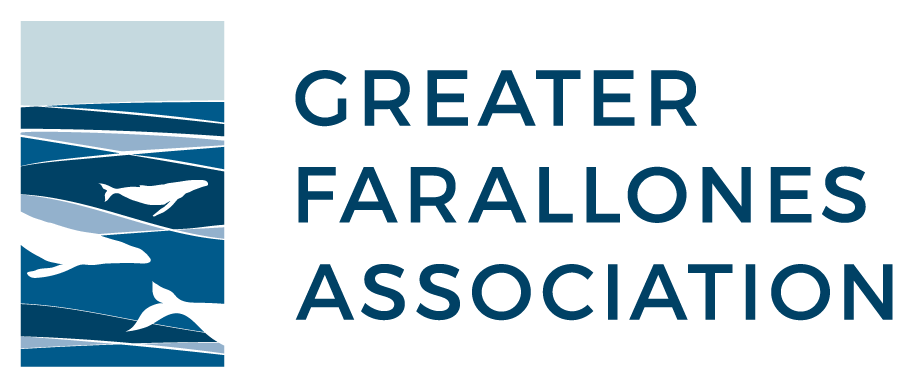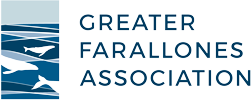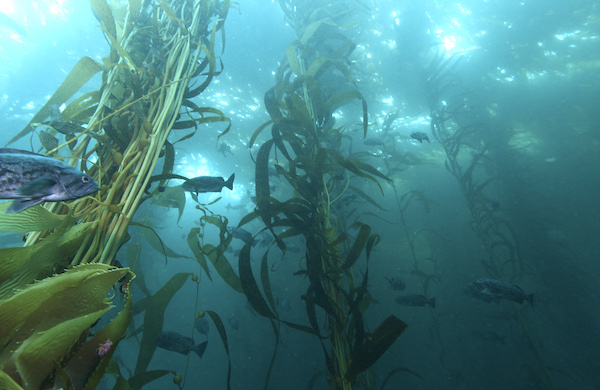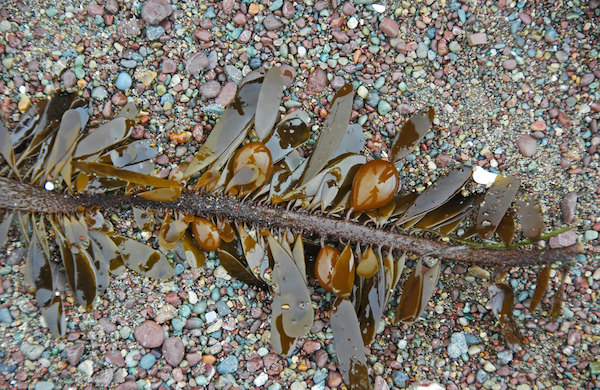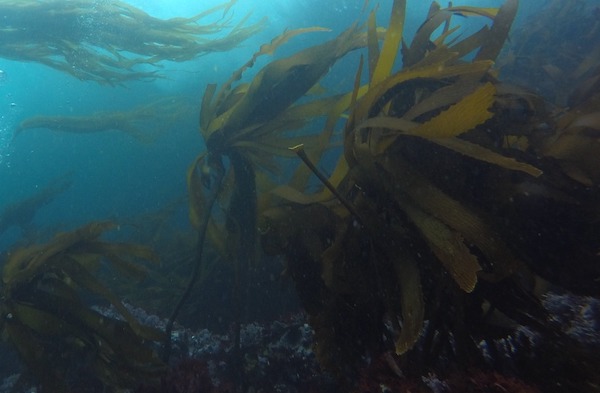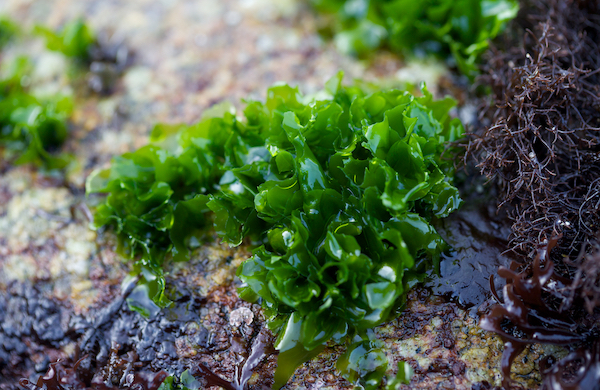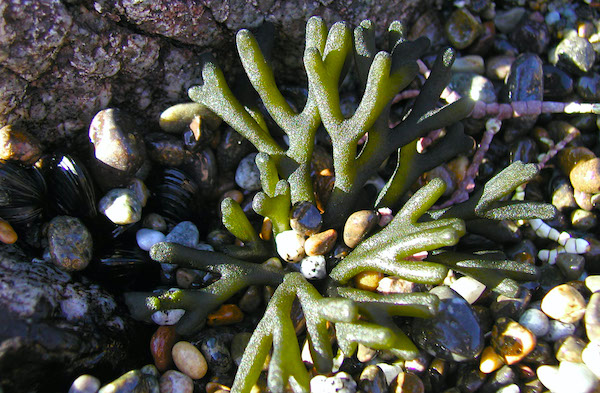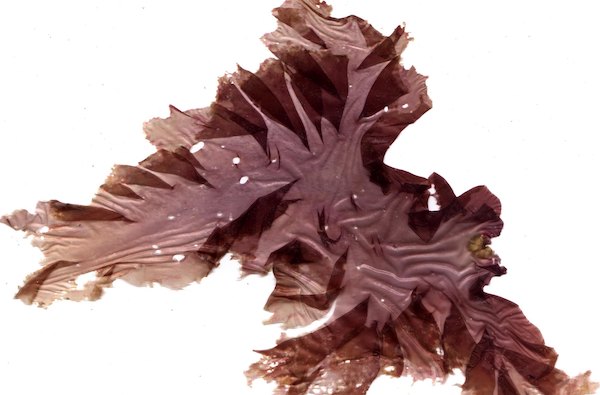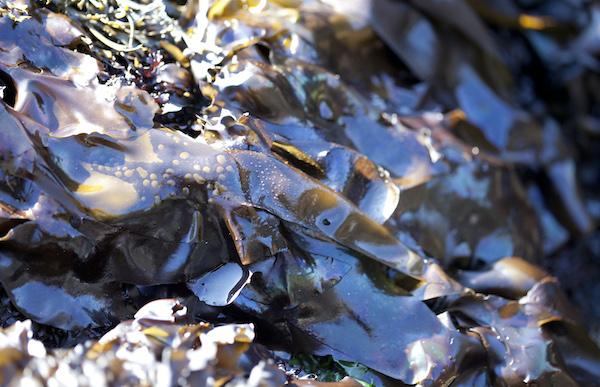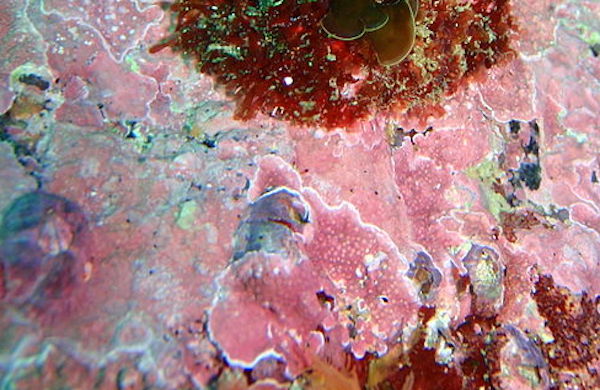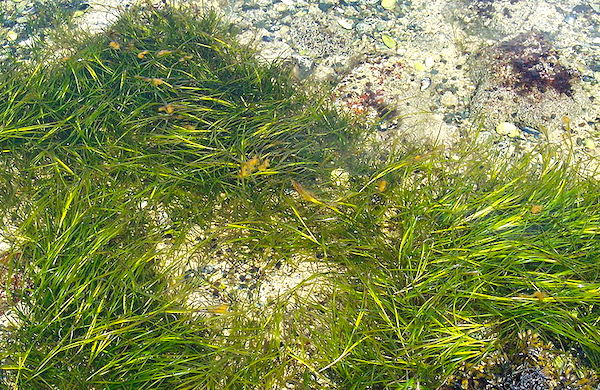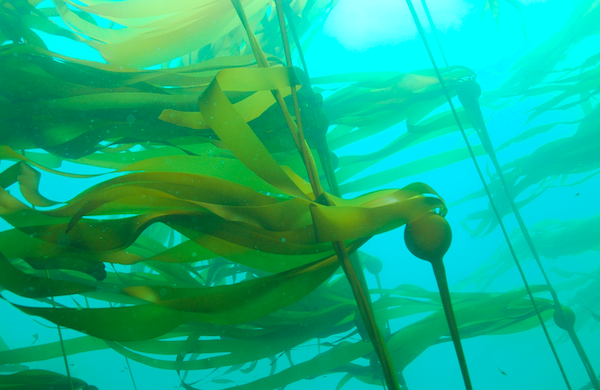
Bull Kelp Nereocystis luetkeana
Bull kelp forest in California has been drastically declining in recent years. Greater Farallones Association and Greater Farallones National Marine Sanctuary are working to recover this important species. Learn more.
Habitat: Intertidal, subtidal
Range: Central California to Alaska
Avg. Size: Can grow up to 118 ft in length
Fun Fact: Bull kelp pneumatocysts (the gas-filled bulbs that keep the kelp raised toward the sunlight) have up to 10 percent carbon monoxide in them as a byproduct of photosynthesis.
Photo: Keith Johnson
